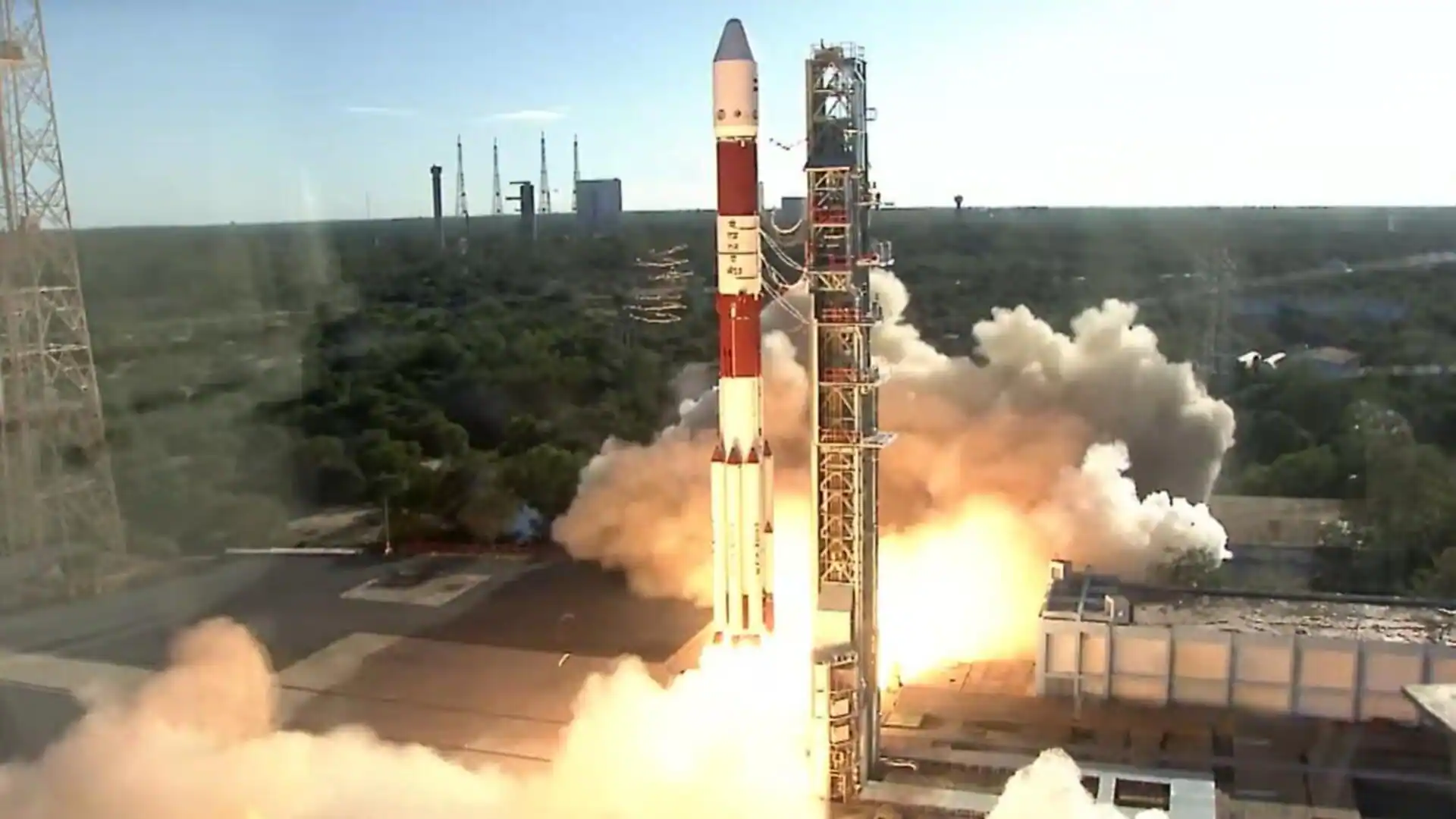1. Introduction
India is preparing to launch its first commercially manufactured PSLV (Polar Satellite Launch Vehicle) early next year.
This mission will carry Oceansat, a satellite used for ocean observation, climate monitoring, and coastal studies.
The development marks a historic shift from ISRO-led manufacturing to private-sector-led rocket production.
2. Background of PSLV Commercial Manufacturing
PSLV is India’s most reliable launch vehicle, with over 50 successful missions.
Traditionally, ISRO has manufactured PSLV with support from multiple vendors.
In 2022, ISRO signed a contract with a private consortium to fully manufacture PSLV rockets independently.
3. Key Players: HAL–L&T Consortium
3.1 Hindustan Aeronautics Limited (HAL)
A major aerospace PSU with expertise in manufacturing aircraft, engines, and aerospace components.
Has long supported ISRO by supplying structures and critical components.
3.2 Larsen & Toubro (L&T)
A leading Indian engineering firm with extensive capability in precision manufacturing, space hardware, and integration.
3.3 Their Joint Role
HAL and L&T together have:
Built the entire PSLV end-to-end for the first time.
Managed production, assembly, and systems integration independent of ISRO.
This marks the first time an Indian rocket is manufactured without ISRO’s direct assembly involvement.
4. Why This Is a Significant Breakthrough
Represents a major step in India’s space privatization and commercialization strategy.
Demonstrates industry capability to handle high-precision, high-complexity space systems.
Allows ISRO to focus on advanced missions (Gaganyaan, Chandrayaan, NISAR, reusable launch vehicles, heavy-lift rockets).
5. ISRO’s Strategic Shift
5.1 From Manufacturing to Mission Leadership
ISRO is moving away from routine manufacturing tasks.
Focus now on:
Research and development
Advanced propulsion systems
Human spaceflight
Deep space missions
Reusable launch vehicles
5.2 Transferring Technology to Industry
PSLV production partially transferred; complete manufacturing now in industry.
SSLV (Small Satellite Launch Vehicle) technology fully transferred to HAL, enabling private-sector-led production and commercialization.
6. Oceansat Mission Overview
Oceansat is an ocean observation satellite designed for:
Monitoring sea surface temperature
Tracking algal blooms
Supporting fisheries
Monitoring winds, currents, and ocean colour
Useful for:
Disaster management (cyclones, coastal hazards)
Climate studies
Marine resource management
7. Future Outlook: Multiple Launches Expected
Industry officials expect 2–3 PSLV launches next year from the consortium.
Contract includes five PSLV-XL rockets.
Rising global demand for small and medium satellites → greater launch opportunities.
8. Benefits for India’s Commercial Space Sector
8.1 Increased Launch Capacity
Adds new manufacturing lines beyond ISRO, enabling more frequent launches.
8.2 Global Competitiveness
India can offer affordable and reliable launches, attracting international customers.
8.3 Strengthening Make in India & Space Economy
Boosts domestic technological capability.
Creates high-skilled jobs in manufacturing, design, and integration.
8.4 Private Sector Growth
Encourages more companies to invest in launch vehicles, satellites, and space services.
9. Challenges Faced During Manufacturing
Some components required deep technical assistance from ISRO.
Ensuring reliability equivalent to ISRO-built rockets remains essential.
Complex supply-chain coordination needed for multi-stage rocket integration.
10. Exam-Oriented Key Facts (Revision Notes)
India’s first industry-built PSLV will launch Oceansat early next year.
The rocket is manufactured end-to-end by HAL–L&T.
ISRO signed the 2022 contract for five PSLV-XL rockets.
Technology for SSLV production fully transferred to HAL.
Part of India’s strategy to shift routine launch vehicle production to industry.
Supports the expansion of commercial launch services and global competitiveness.
Expected 2–3 PSLV commercial launches next year.
Helps ISRO shift focus to advanced missions and R&D.






